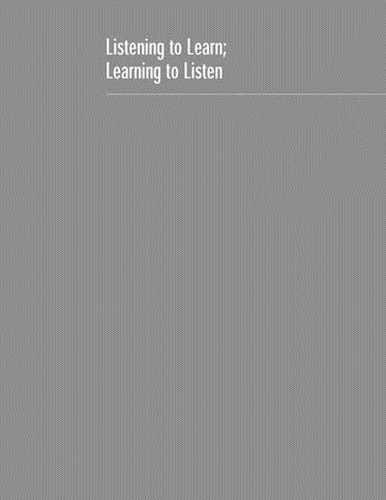Listening Training
Improving listening skills takes time and practice. An entire improvement session might be devoted to helping participants:
respect listening's role in learning vital, everyday information
become aware of the causes and costs of poor listening
realize the value of improved listening attitudes, habits, and skills
Trainers can purchase various listening skills assessment instruments or find them in listening and training publications. Some are serious and scientific; others are merely designed to encourage participants to “take a look” at listening. Listening will allow for participants' in-class discussion of case studies, role playing, and practice of newly learned listening-responding techniques. Again, trainers can find many ready-made cases and roleplay scenarios. Some of these are fairly sophisticated and present variations in technique according to whom you are listening to:
a superior/supervisor
a colleague or subordinate
speaking on the telephone
small or large groups and meetings
In The Skills of Training: A Guide for managers and Practitioners, author Leslie Rae describes the use of listening triads. One member of a group of three serves as observer or judge while the other two carry on a timed conversation. Speaker 1 says something, then speaker 2 must summarize that statement accurately before adding any comments. Then speaker 2's comments must be summarized by speaker 1. The observer keeps time and, if necessary, rules on disputes about the summaries. Each group has three conversations, with each triad member taking one turn as observer. The triad technique is admittedly artificial, but it highlights the concept that meaning resides in people, not words. This helps learners realize why responsibility for understanding is shared by speaker and listener.
Listening training may also include running howto audio- and videotapes or making “how you're doing” tapes for participants' self-evaluation. In The Winning Trainer, author Julius E. Eitington suggests playing a tape or film for listening or viewing-listening teams. Within a team, a person or people are designated as:
Questioners who listen (or look) for anything that brings a question to mind.
Clarifiers who listen for anything that's obscure.
Agreers who listen for ideas and assertions they can accept.
Implementers/appliers who listen for practical information.
The above exercise will help to demonstrate the wealth of information—verbal and nonverbalavailable to those who pay attention. A quick glance at any list of listening comprehension skills reveals that many of them relate to speaking skills or correspond to skills needed in reading and writing. If you already offer training in one or more of those skill areas, you may expand your program to encompass general communication skills such as:
organizing or following a logical sequence
understanding the denotation and connotation of words
distinguishing fact from opinion
judging the validity of ideas and their supporting evidence
Or you may incorporate listening skills in training workshops on topics such as the following:
Note taking When, why, how to.
Action plans Translating thoughts and words into practice.
Interviewing Finding out what others know.
Meetings How to get the most out of the time you spend.
Customer service How do you know what customers really want?
Behavioral Style Model
|
One-Way Communication Leads to a Dead EndTry the following exercise as a training device to demonstrate the pitfalls of one-way communication:
When this exercise is over, follow it with another volunteer using a comparable illustration, but allow for a full and free two-way communication, including questions, demonstration, and discussion. Have the audience write down, reflect on, and share the skills they have learned in this process.
|
Desire + Effort + Skill = Improved Listening
If you decide to develop listening training, refer to the reference and resource lists for additional information. According to Donald L. Kirkpatrick, author of No-Nonsense Communication, “Improved listening skills will not necessarily result in improved listening. We must apply these skills. We must be convinced that it pays to listen. The combination of desire (I want to listen), effort (I'm going to work at it), and skill (I know how to do it) will result in improved listening.”
Perhaps we don't really want to listen. We may receive too much information and too many opinions to handle at one time. We may become too involved in another person's life when we think we have enough turmoil in our own. We may hear more criticism than we want to hear or more bad news. We may see ourselves in an unflattering light through another's not-so-rosy vision of us. In the end, our efforts to listen may be unappreciated or even exploited.
More often, our sincere attempts to listen result in rewards. Effective listening skills help us filter through information and select what is essential to understanding. Empathic listening lets us really understand another's viewpoint. We may find out why a supervisor, co-worker, family member, or friend acts the way they do.
Listening also promotes a mutual exchange of information and promotes our own self-discovery. Good listening skills may show us that others think even better of us than we thought they did. Listening to criticism helps us to become more aware of our shortcomings and mistakes. Listening promotes better decision making and problem solving. Finally, listening leads to better management, promoting trust, high productivity, and communication between all levels of an organization. As President Calvin Coolidge said, “Nobody ever listened himself out of a job.”
One of our first lessons when learning to cross streets was a slogan by Ralph R. Upton in 1912 to replace the old U.S. railway-crossing signs. His coining of “Stop; look; listen” shows the importance of using all of our senses to be aware and attentive to our surroundings. Whether a train is coming or someone is signaling us through words, tones, and body language, we need to stop, look, and listen to the messages they are sending us.


